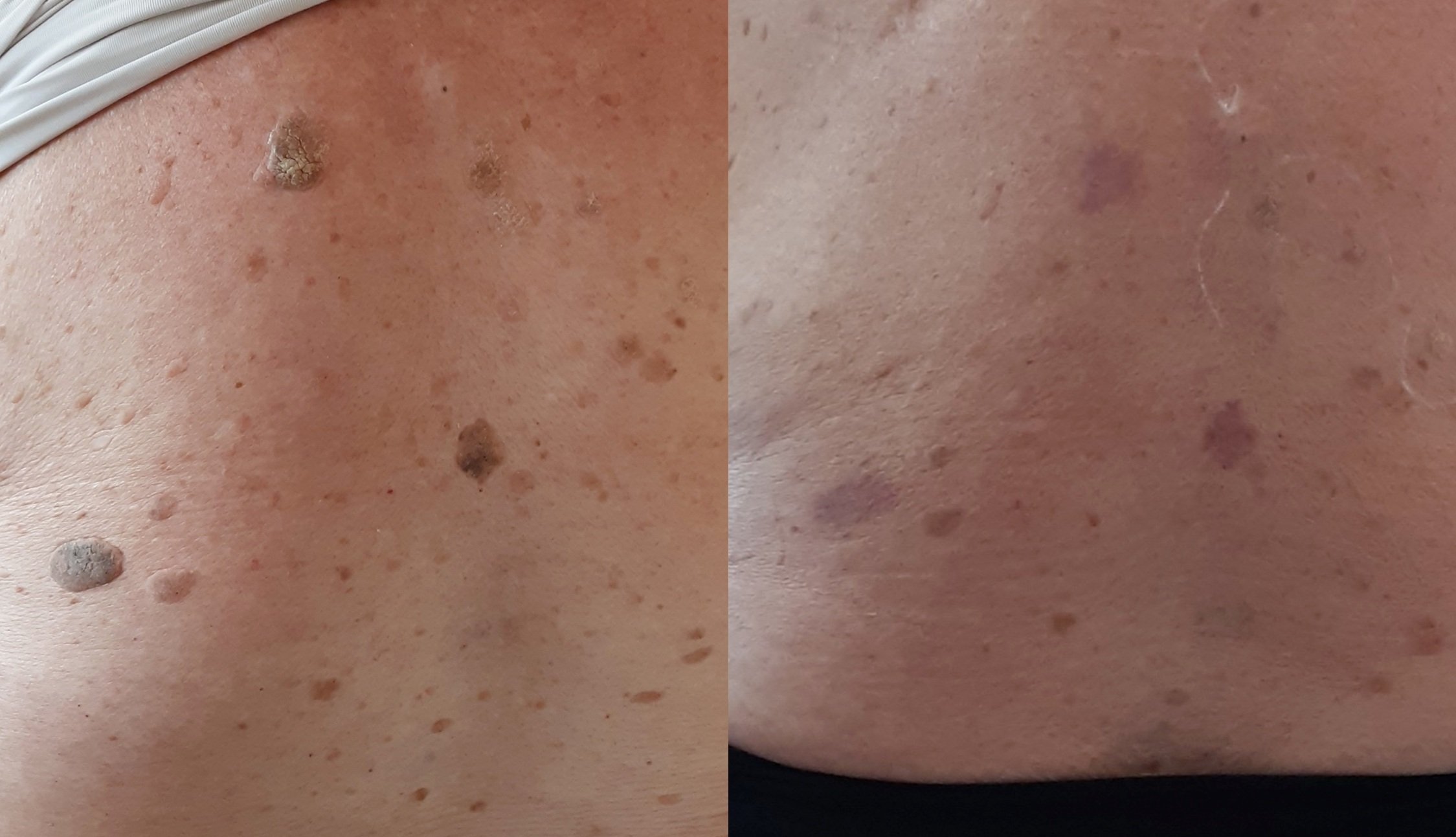What is Plasma Fibroblast Therapy?
Plasma Fibroblast is a non-surgical skin tightening treatment designed to shrink, tighten and reduce the volume of excess skin by targeting fibroblasts. Fibroblasts are collagen and protein-producing cells in the dermis - the layer of skin just below your outermost skin layer.
By delivering energy in the form of plasma to rejuvenate the skin, collagen production is increased which improves facial lines and wrinkles, skin pigmentation and can treat multiple other skin concerns such as moles, skin tags, warts, seborrheic keratosis.
How does Plasma Fibroblast Therapy work?
Plasma Fibroblast Therapy uses a pen-like device that discharges a high-frequency electric current to small areas of the skin.
The process breaks down proteins in the skin, encourages tissue regeneration, stimulates fibroblast activity and causes tissue contraction (tightening). The plasma tip doesn’t directly touch the skin, but instead releases a targeted current just above the skin. The hot current creates small holes, or micro-injuries, in the skin’s top layer.
The variety and arrangement of the points combined with the electric energy produced can reduce excess skin with the result being visibility tightened skin in a concentrated area.
What is Plasma Fibroblast Therapy used to treat?
Non-surgical blepharoplasty: skin tightening of saggy upper and lower eyelids
Skin lesions such as moles, skin tags, warts, seborrheic keratosis
Unwanted wrinkles on face: frown lines, crows feet, smokers lines, neck lines
Skin pigmentation: age spots on face or hands, sun spots, melasma, chloasma, freckles
Scarring including stretch marks, acne scars and post-surgical scars
Before and After Blemish Removal using Plasma Fibroblast Therapy
Facial Blemish Removal Before and After using Plasma Fibroblast Therapy
Am I suitable for Plasma Fibroblast?
Plasma is not suitable for everyone. There are certain medical conditions or specific skin types which do not react well to this treatment, such as:
very dark skin due to the risk of hyper-pigmentation or hypo-pigmentation being much higher
women who are pregnant or breastfeeding
metal plates, pins or other implants
cardio-vascular deficiencies including severe uncontrolled blood pressure
Pacemakers or any other medical device with an electrical current
current or recent hemorrhage
malignancy and chemotherapy in the past 3 years
Anybody who is susceptible to hypertrophic scarring or keloid formation
Anybody who suffers from auto-immune disease or other illnesses which affect the immune system
Does Plasma Fibroblast Therapy hurt?
A topical anaesthetic is applied to the area that is going to be treated, as the procedure can be a little uncomfortable. A slight burning sensation can be felt as the skin becomes heated, but the anaesthetic helps to make this treatment tolerable. Paracetamol before your treatment also helps if you’d like an extra layer of pain relief.
How long Does Plasma Fibroblast last?
The healing process normally takes 7-10 days, and skin will be noticeably tighter immediately.
The longer lasting results from the generation of new collagen begin to appear within 2-4 weeks, continue to improve for about three months, and can last up to three years.
At least 2 treatments are usually needed, and additional treatments can be done 6-8 weeks after the initial treatment, or when the skin has fully recovered.
Plasma Fibroblast Recovery over 5 Days
What to do before your Plasma Treatment?
Avoid any kind of tanning (spray tanning, tanning injections, sun tanning and tanning beds) for 2-4 weeks before your treatment
No Botulinum Toxin or fillers 21 days before or after this treatment
No facial acids including peels (Retin A, Salicylic, Glycolic) 14 days before, or 21 days after this treatment
Book Your Treatment
If you haven’t visited The Secret Garden before, we strongly recommend arranging a consultation before booking a treatment.




